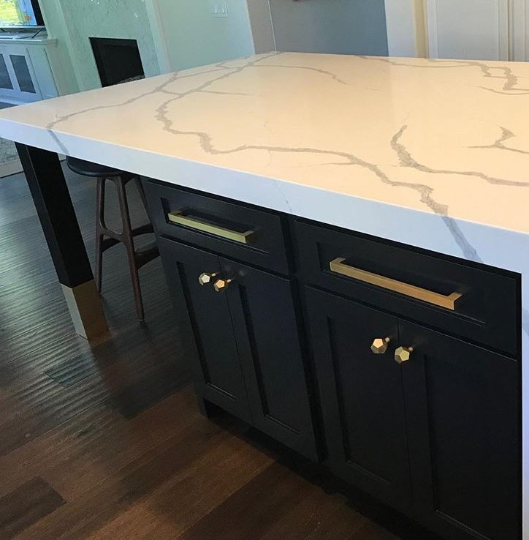Transform Your Kitchen's Look with Special Legs For Kitchen Island Devices
Transform Your Kitchen's Look with Special Legs For Kitchen Island Devices
Blog Article
Important Elements to Consider When Picking Legs For Kitchen Area Island
Choosing the suitable legs for a kitchen island entails a cautious assessment of numerous aspects that can substantially influence both capability and visual appeal. Amongst these, the option of material plays a crucial function in guaranteeing durability, while the layout should enhance the existing decoration. Additionally, factors to consider such as elevation and weight support are important for stability and comfort. As we check out these components, it comes to be clear that each choice can have significant ramifications for the general kitchen experience. What subtleties should be taken into consideration in each of these classifications to attain the excellent equilibrium?
Material Options
When picking legs for a kitchen island, understanding the various material alternatives is necessary for achieving both aesthetic allure and architectural stability (Legs For Kitchen Island). The selection of material significantly influences not just the longevity of the island but likewise its general style and functionality
Metal legs, often made from stainless steel or wrought iron, add a industrial and contemporary feeling while guaranteeing resilience and stability. These materials are immune to wear and can support significant weight, making them suitable for larger islands.
One more option is engineered products, like MDF or plywood, which can be much more affordable while still supplying a range of finishes. They might not supply the exact same degree of security as solid wood or metal. Legs For Kitchen Island. Products such as acrylic or glass can produce a modern look, though they may require added support to guarantee stability.
Eventually, the option of product for kitchen area island legs need to straighten with the preferred performance and the total style of the kitchen.
Design and Layout

When taking into consideration design, the shape and surface of the legs are critical. Conical legs can provide a sense of agility and style, while thicker, much more durable legs can share toughness and security. Furthermore, the finish-- be it repainted, tarnished, or all-natural-- must enhance the kitchen cabinetry and counter top products to create a unified appearance.
In addition, the layout of the legs can additionally show individual preference. Personalized or attractive legs, such as those including elaborate carvings or unique geometric shapes, can work as centerpieces, including character and individuality to the cooking area. Ultimately, the appropriate selection will certainly not just enhance performance however likewise raise the aesthetic appeal, making the kitchen island a standout attribute of the home.
Height Considerations
Choosing the appropriate elevation for cooking area island legs is essential, as it straight influences both functionality and comfort. The common elevation for a cooking area island commonly ranges from 36 to 42 inches, straightening with common countertop heights.

It is additionally important to account for individuals' heights and choices. Personalizing the height can ensure a comfy experience for all family members, making the kitchen island a more functional and delightful room.
Weight Support
Guaranteeing appropriate weight assistance for cooking area island legs is important for both safety and security and performance. The cooking area island commonly offers multiple purposes, consisting of food preparation, dining, and extra storage space, requiring a robust assistance structure. When choosing legs, it is essential to take into consideration the general weight ability required based on the island's meant usage and the products that will certainly be placed on it.
The selection of material for the legs plays a considerable duty in their weight-bearing capacities. Solid wood, metal, and durable composites usually give exceptional strength compared to lighter materials. Furthermore, the style of the legs-- whether they are directly, tapered, or have a pedestal type-- can affect their capacity to disperse weight properly throughout the framework.
In addition, the leg positioning should be strategically intended to enhance security. Legs placed at the corners or with a larger base can better sustain larger lots. Constantly speak with the supplier's specs relating to tons limits to ensure that the legs can maintain the intended weight without endangering security. In recap, picking kitchen island legs with sufficient weight this article assistance is necessary for creating a useful and secure cooking room.
Installation and Upkeep
Correct setup and maintenance of kitchen island legs are critical for making sure longevity and security. This usually includes securing the legs to the island base utilizing suitable fasteners, ensuring that the legs are level and aligned.
When set up, regular upkeep is required to maintain the stability and look of the legs - Legs For Kitchen Island. For wooden legs, regular cleansing with a moist cloth and application of ideal timber gloss can stop moisture damage and maintain their coating. Metal legs may require a gentle cleansing service to eliminate oil and crud, complied with by a dry cloth to prevent corrosion formation
In addition, examine the legs consistently for signs of wear or why not find out more damage, such as fractures or loosened joints. Tightening screws or screws as required can also extend the life-span of the legs. By sticking to these installment and upkeep methods, home owners can guarantee that their kitchen island stays strong and aesthetically appealing for several years ahead.
Conclusion

Aesthetic coherence is critical in choosing the style and style of legs for a kitchen area island, as these components substantially affect the total ambiance of the space. Tapered legs can provide a sense of lightness and beauty, while thicker, much more robust legs can convey strength and stability.Choosing the proper height for kitchen island legs is essential, as it he said directly impacts both functionality and convenience. In recap, picking cooking area island legs with appropriate weight assistance is vital for producing a risk-free and practical cooking room.
In final thought, choosing legs for a kitchen area island necessitates mindful factor to consider of different aspects, including material alternatives, design, height, weight assistance, and installment.
Report this page